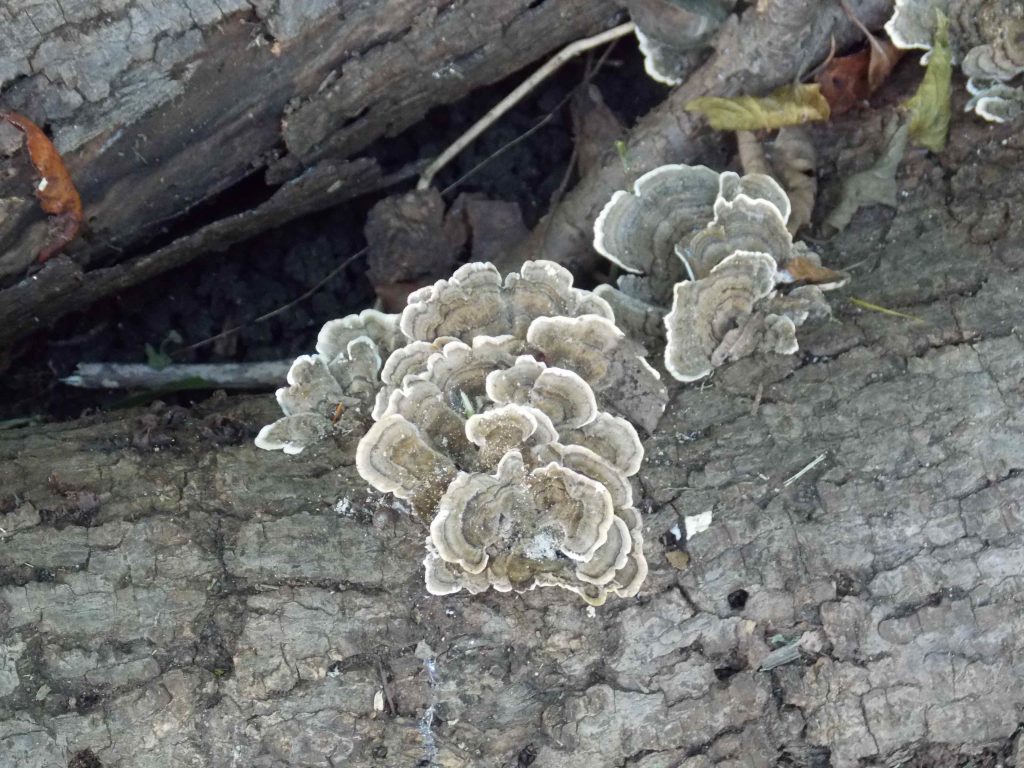Turkey Tail Mushroom: Eat Your (Tasty) Medicine
I used to curse turkey tail mushrooms (Trametes versicolor) because in my old stomping grounds in Brooklyn, NY they were the mushroom I was most likely to find when I was hunting for other mushrooms.
On good days I might find maitake, chicken of the woods, oyster, and many other choice mushrooms. But every day it was guaranteed that I would find turkey tail, and I had no use for it. At that time, I was more interested in the edibility of mushrooms than their medicinal properties, and turkey tail mushrooms are too tough and leathery to be good eats. Or so I thought.
Then I learned that this mushroom was being used by a few fellow foragers as a flavoring, rather than a main ingredient. And, okay, I did get intrigued about its potent medicinal benefits (turkey tail mushroom is used as an anti-cancer remedy and to stimulate the immune system, among other things). I experimented with turkey tail – with tasty results – and decided to celebrate rather than curse its abundance.

Find and Identify
Look for turkey tail mushrooms on fallen logs and stumps (these fungi are decomposers that break down cellulose and lignin in dead wood). They seem to be less moisture-dependent than other mushrooms, and it is often possible to find and harvest them even after a prolonged dry spell. Or maybe they have just dried out on the log when you find them – they will still be good for our purposes.
Turkey tail is a bracket mushroom, meaning it grows like little shelves. These “shelves” are thin, with a papery or leathery feel (unlike much larger, thicker hen of the woods, Grifola frondosa). Turkey tail’s velvety surface can range from brown to brown-grey to reddish orange in concentric color zones that are, indeed, reminiscent of the appearance of a turkey’s tail.
There are several other bracket fungi that meet this description so far. But here’s how to tell that you’ve found Trametes versicolor. Look on the underside of the mushroom. Instead of a smooth pore surface like that of false turkey tail (Stereum hirsutum), or a sea sponge textured, lavender-colored underside like Trichaptum abietinum, turkey tail’s underside reveals little holes or pits that look almost like the surface of coral. These are tiny tubes containing the mushroom’s spores.
Turkey tail’s spore print is white to light yellow.
How to Harvest
Use a sharp knife to cut turkey tail mushrooms from the rotting wood they are growing on. Don’t tug or you’ll dislodge the base along with dirt and debris that will be a hassle to remove if they get into your collection container.
How to Prepare
Even if you boiled turkey tail mushrooms for days you would still end up with something as tough as the proverbial shoe leather. No amount of fine chopping is going to give this mushroom a good mouth feel. But the flavor is intriguing, making this a prime candidate for the Bay Leaf Method. Add fresh or dried turkey tail mushrooms to broths, sauces, and stews but – as you would with bay leaves – remove them before serving.
You can also infuse them with other wild flavorings as an interesting component of wild beers and sodas. Dried and finely ground, turkey tails are a good addition to savory wild seasoning blends (try combining them with the ground leaves of Northern bayberry, Myrica pensylvanica a.k.a. Morella pensylvanica, and sweet fern, Comptonia peregrina. Both of these aromatic herbs have in common that they are too tough to chew whole, but packed with flavor.
So there are ways to get culinary enjoyment from this ubiquitous mushroom, and you’ll be getting its immune system-boosting benefits as a bonus.
An earlier version of this post is part of The Skillful Forager: Essential Techniques for Responsible Foraging and Making the Most of Your Wild Edibles

Leave a Reply